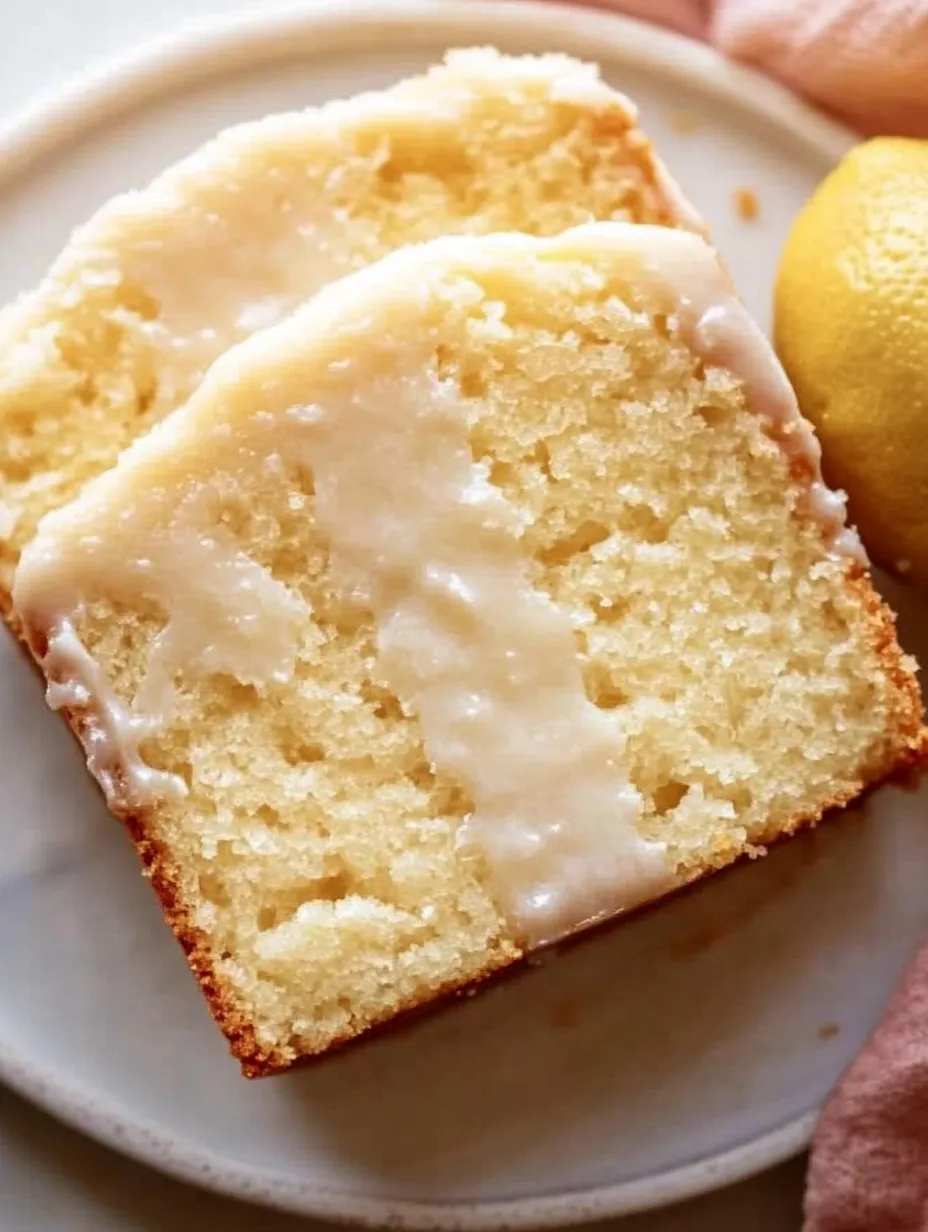 Pin it
Pin it
This hearty lemon pound cake has been my family's favorite dessert for years, delivering the perfect balance of tart lemon and sweet vanilla in every bite. The dense, buttery texture makes it substantial enough for dessert yet appropriate for brunch or afternoon tea alongside coffee.
I first baked this lemon pound cake for my daughter's spring birthday when she requested something "sunny and special." Now it's our official welcome to spring tradition, appearing at our table as soon as the first daffodils bloom.
Ingredients
- All purpose flour: Provides structure while keeping the crumb tender and tight perfect for classic pound cake texture
- Baking powder: Gives just enough lift without making it too cakey keep it level for even baking
- Unsalted butter: Creates that rich melt in your mouth quality that defines pound cake use high quality for best flavor
- Granulated sugar: Balances the tartness of lemon while creating those crisp crackly edges everyone fights over
- Room temperature eggs: Incorporate air when beaten with butter and sugar resulting in proper rise
- Sour cream: Adds incredible moisture and tanginess that complements the lemon perfectly
- Fresh lemon juice: Delivers bright authentic flavor always use fresh never bottled for best results
- Lemon zest: Contains essential oils that intensify the lemon flavor without additional acidity
- Vanilla extract: Rounds out the flavor profile and adds depth behind the citrus notes
Step-by-Step Instructions
- Position Rack and Preheat Oven:
- Move your oven rack to the lower third position and heat to 350°F. This position ensures even baking without burning the top. While the oven heats, prepare your loaf pan with a thorough coat of nonstick spray, making sure to get into all corners for easy release later.
- Prepare Dry Ingredients:
- Whisk together flour, baking powder, and salt in a large bowl until completely combined. This step distributes the leavening agent evenly throughout the flour, ensuring your cake rises uniformly. Take your time here as proper mixing now prevents flour pockets later.
- Cream Butter and Sugar:
- Beat butter on high speed until smooth and creamy, about one full minute. Add sugar and continue beating for two more minutes until the mixture is fluffy and pale. This extended beating incorporates air into the batter, giving your pound cake its fine texture. You'll notice the color lightening significantly.
- Add Wet Ingredients:
- Add eggs one at a time, fully incorporating each before adding the next. Then mix in sour cream, lemon juice, zest, and vanilla. The mixture may appear slightly curdled at this stage due to the different temperatures and textures combining. This is completely normal and will smooth out when you add the dry ingredients.
- Combine Wet and Dry Mixtures:
- Add dry ingredients to wet ingredients with mixer on low speed, mixing just until combined. Overmixing develops gluten and results in a tough cake, so stop as soon as the flour disappears. The batter will be noticeably thick, almost like a soft cookie dough.
- Bake to Perfection:
- Transfer the thick batter to your prepared pan, smoothing the top with a spatula. Bake for 55 to 65 minutes, tenting with foil halfway through to prevent excessive browning. The cake is done when a toothpick inserted in the center comes out mostly clean with just a few moist crumbs. Allow to cool in the pan for a full hour before removing.
- Prepare and Apply Icing:
- Whisk confectioners' sugar, lemon juice, and heavy cream until smooth. Pour over the cake while still slightly warm for a thinner coating that seeps in slightly, or wait until completely cool for a thicker, more defined icing layer. Either way creates a beautiful finish with minimal effort.
 Pin it
Pin it
My absolute favorite part of this recipe is zesting the lemons. That moment when the bright citrus oils release into the air is pure kitchen magic. My grandmother taught me to zest directly over the mixing bowl so none of those precious oils are lost on the cutting board. It's these little details that transform a good cake into something truly memorable.
The Science Behind That Perfect Crumb
The secret to that signature pound cake texture lies in the careful balance of fats, sugar, and flour. When you cream butter and sugar together for the full recommended time, you're actually creating thousands of tiny air bubbles that expand during baking. These microscopic pockets give pound cake its distinctive tight yet tender crumb structure. The addition of sour cream further tenderizes by slightly inhibiting gluten formation while adding richness. This is why the texture of pound cake differs so dramatically from regular cake even with similar ingredients.
Flavor Variations To Try
While lemon makes for a brilliant pound cake, this recipe serves as an excellent base for other flavor experiments. Replace the lemon zest and juice with orange for a more subtle citrus note. Almond lovers can reduce the vanilla to half a teaspoon and add a quarter teaspoon of almond extract for a sophisticated flavor shift. For a seasonal twist, fold in a half cup of fresh blueberries or raspberries just before baking. The berries burst during baking, creating pockets of jammy goodness throughout the cake.
 Pin it
Pin it
Serving Suggestions
Transform this humble pound cake into an elegant dessert by warming individual slices and topping with fresh berries and a dollop of whipped cream. For brunch service, toast slices lightly and spread with a thin layer of lemon curd. During summer months, use this pound cake as the base for a spectacular trifle layered with fresh strawberries, blueberries, and lightly sweetened whipped cream. The sturdy texture holds up beautifully to these additions without becoming soggy.
Storage Tips
To maintain maximum freshness, store completely cooled cake under a cake dome or wrapped tightly in plastic wrap. At room temperature, it remains delicious for three days. For longer storage, refrigerate for up to a week, though allowing refrigerated slices to come to room temperature before serving yields the best flavor and texture. For longer storage, freeze unglazed cake wrapped first in plastic wrap then in aluminum foil. Thaw overnight in the refrigerator and glaze just before serving.
Frequently Asked Questions
- → How can I ensure my pound cake is moist?
Use full-fat sour cream, softened butter, and freshly squeezed lemon juice for maximum moisture. Avoid overmixing the batter to maintain a tender texture.
- → Can I substitute sour cream in the recipe?
Yes, you can use plain yogurt or dairy/non-dairy milk. Keep in mind that milk may result in a lighter, less dense texture compared to sour cream.
- → How do I prevent the cake from browning too much?
Tent the cake with aluminum foil halfway through baking to avoid excessive browning on top while ensuring it cooks evenly.
- → Can I add other ingredients like blueberries?
Yes, fold 1 cup of fresh blueberries into the batter at the end. Avoid frozen blueberries to prevent the batter from turning blueish.
- → What is the best way to store the lemon pound cake?
Store the cake in an airtight container at room temperature for up to 3 days or refrigerate for up to a week. It can also be frozen for up to 3 months without icing.
- → When should I add the icing?
You can drizzle the icing over the cake while it's slightly warm or wait for it to cool completely for a neater presentation.
